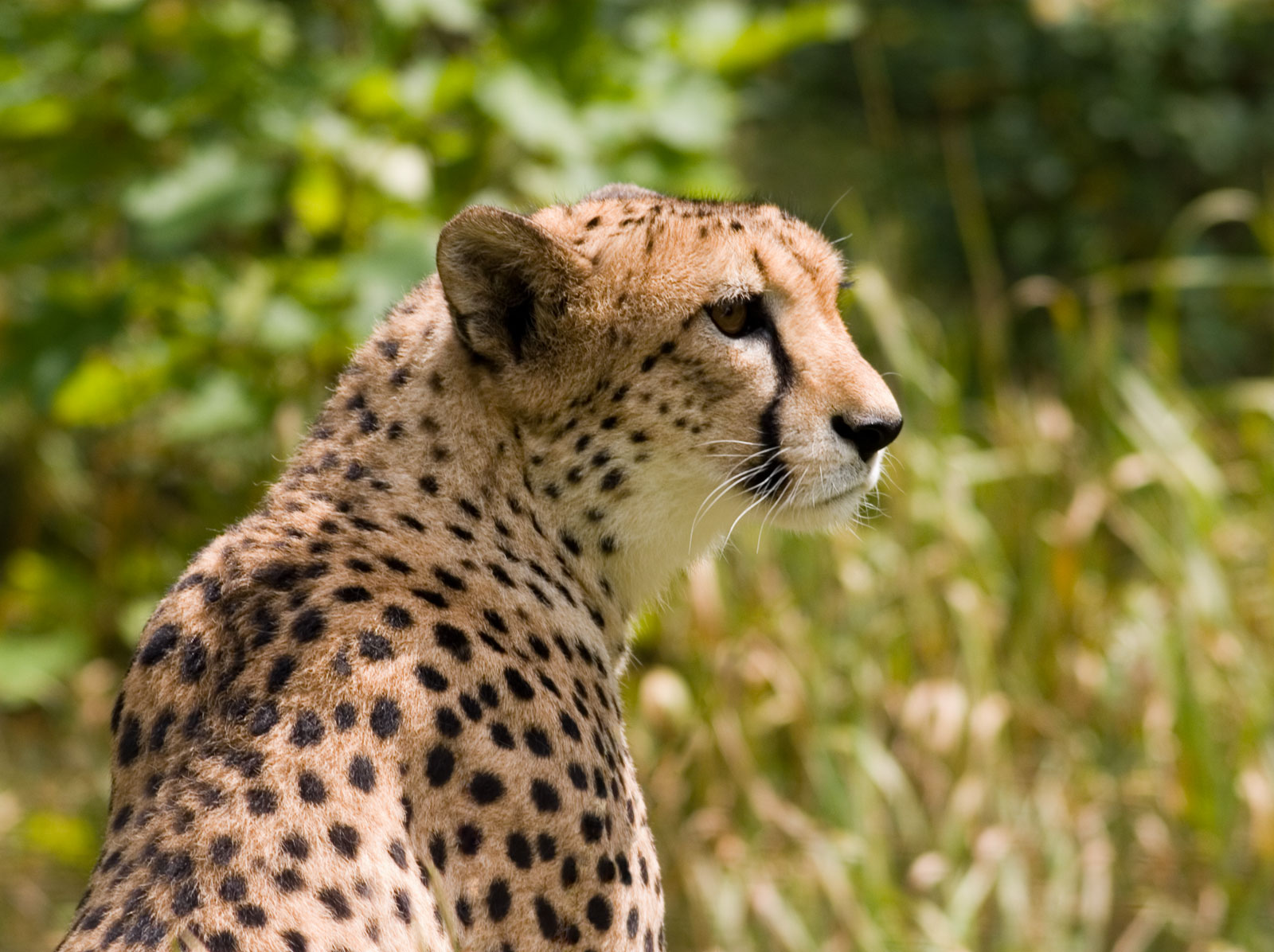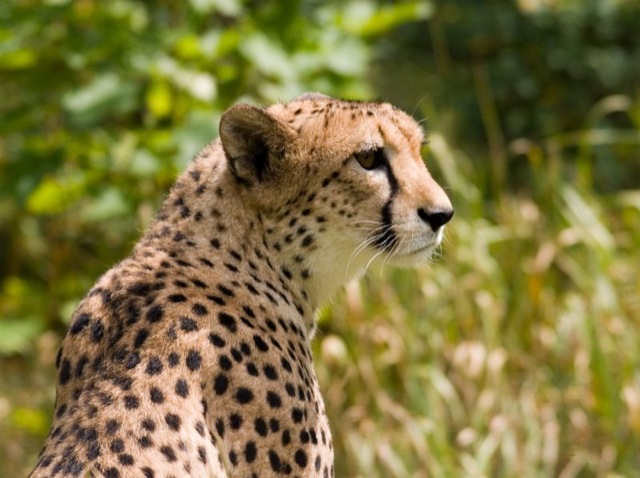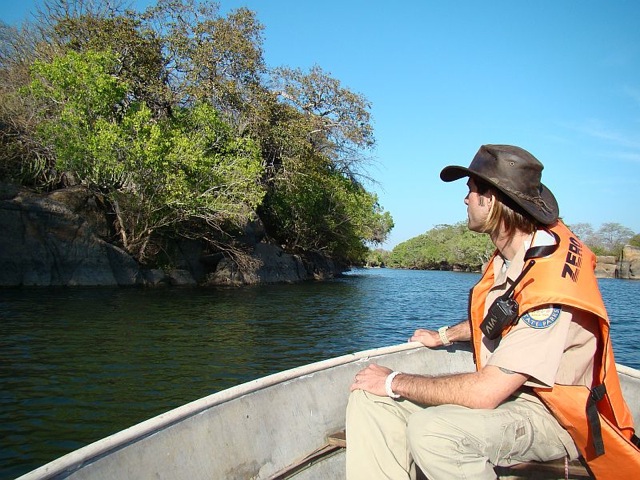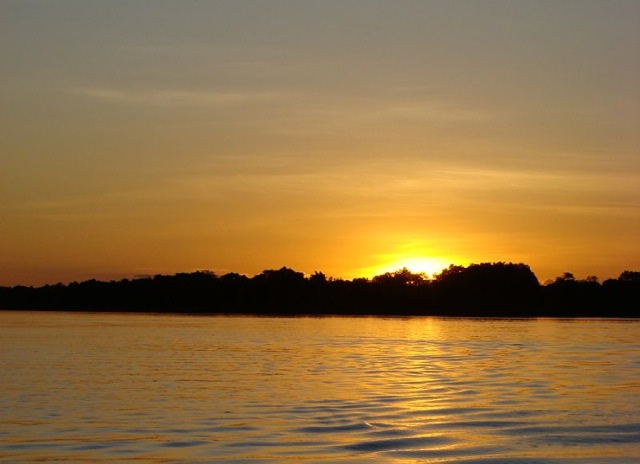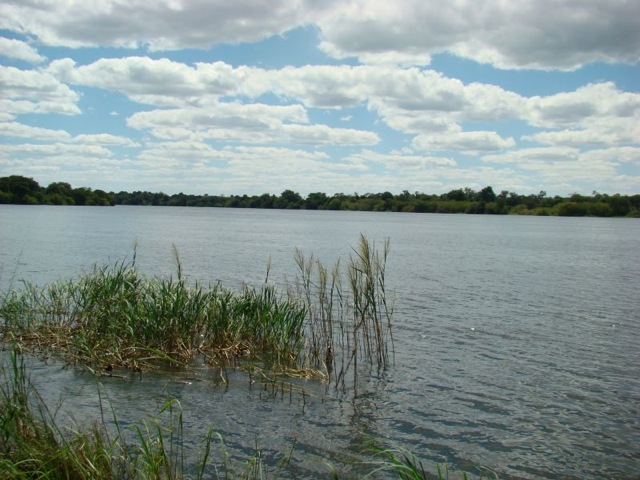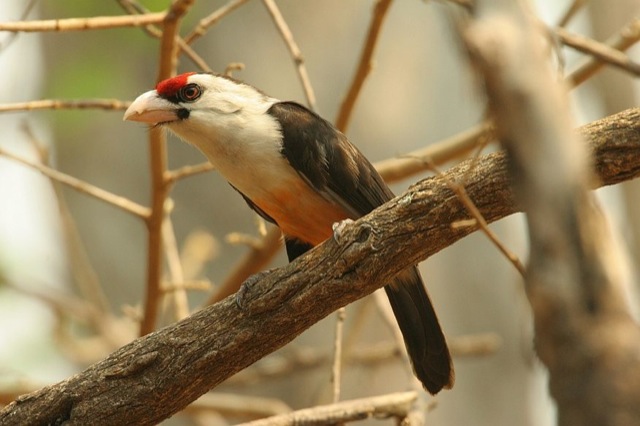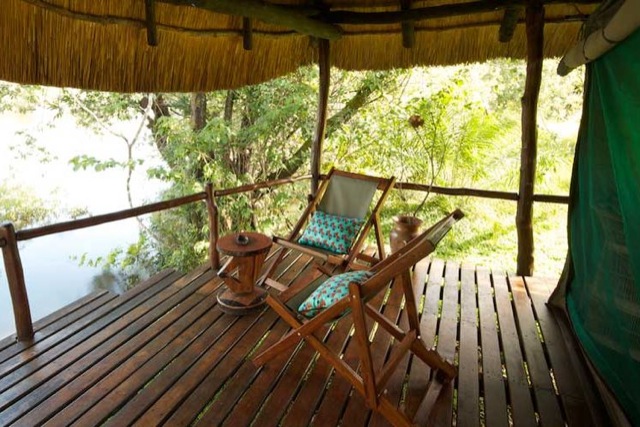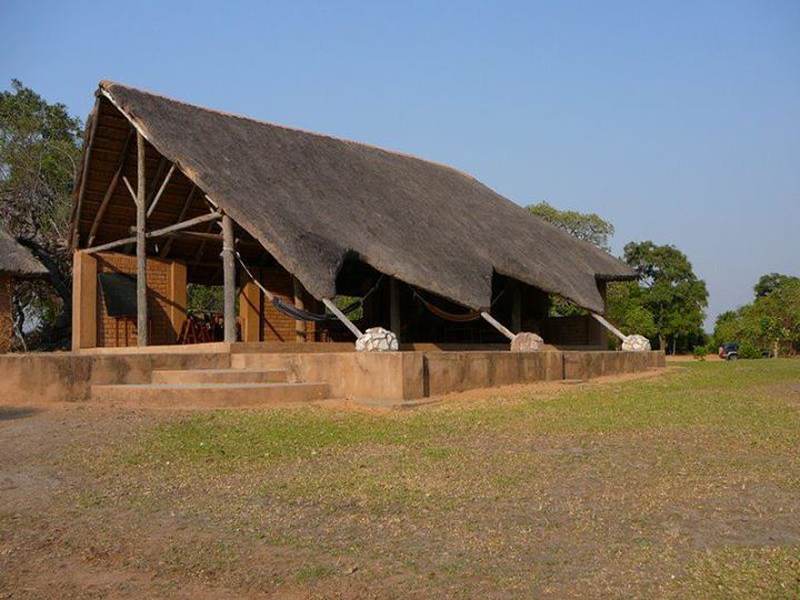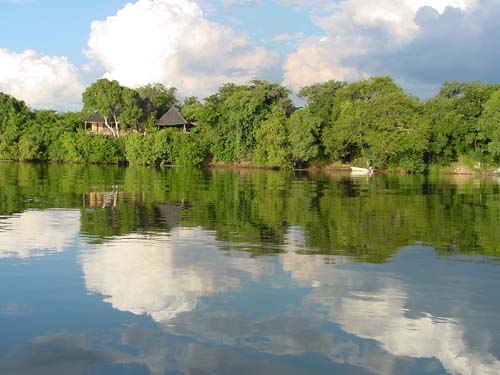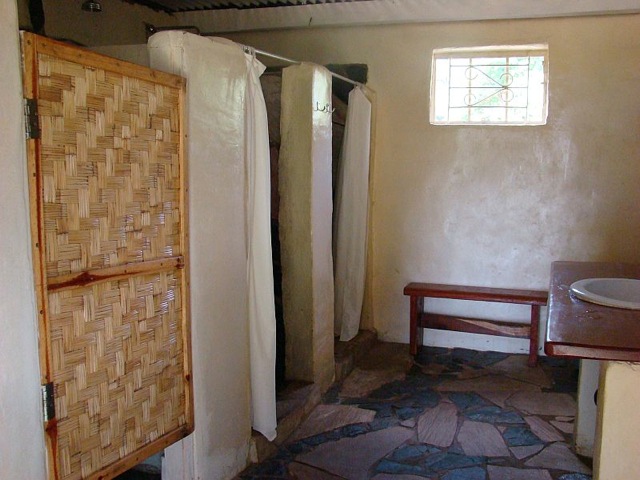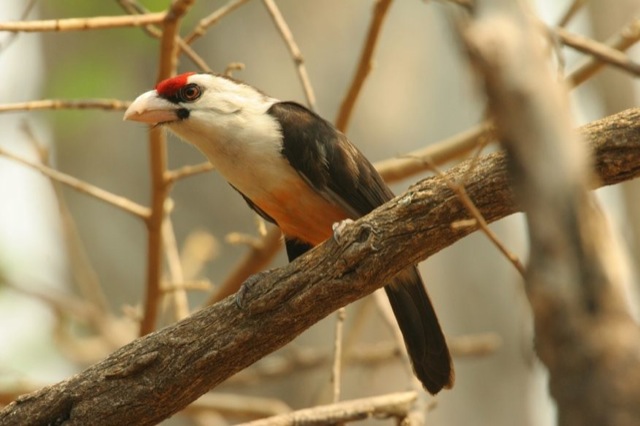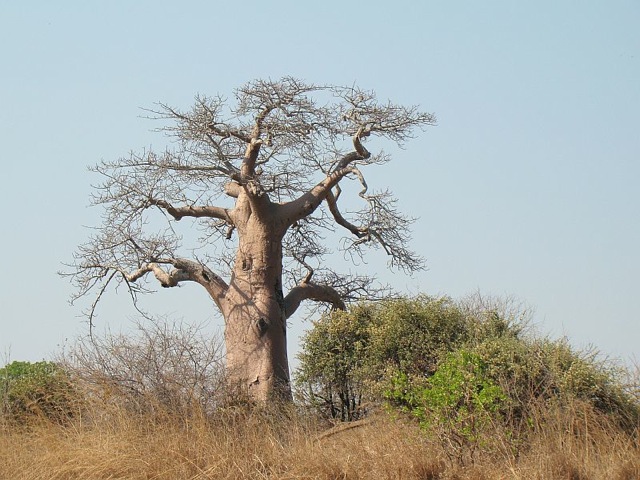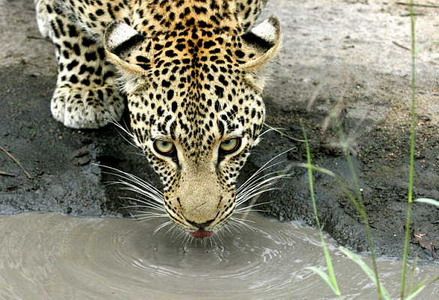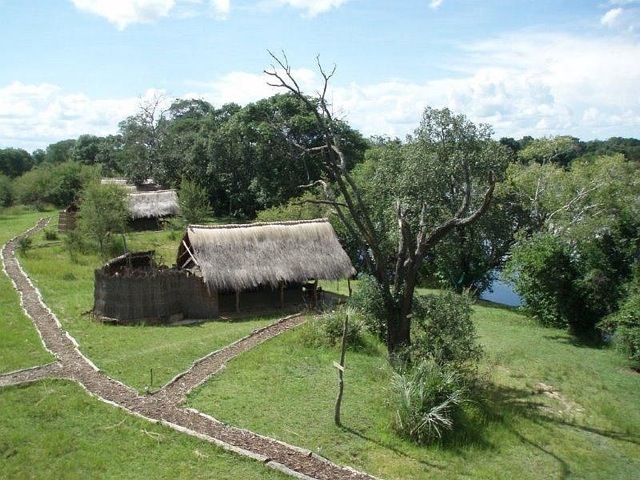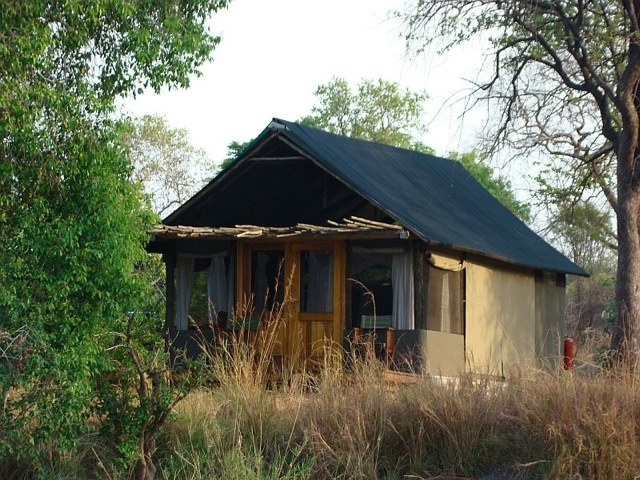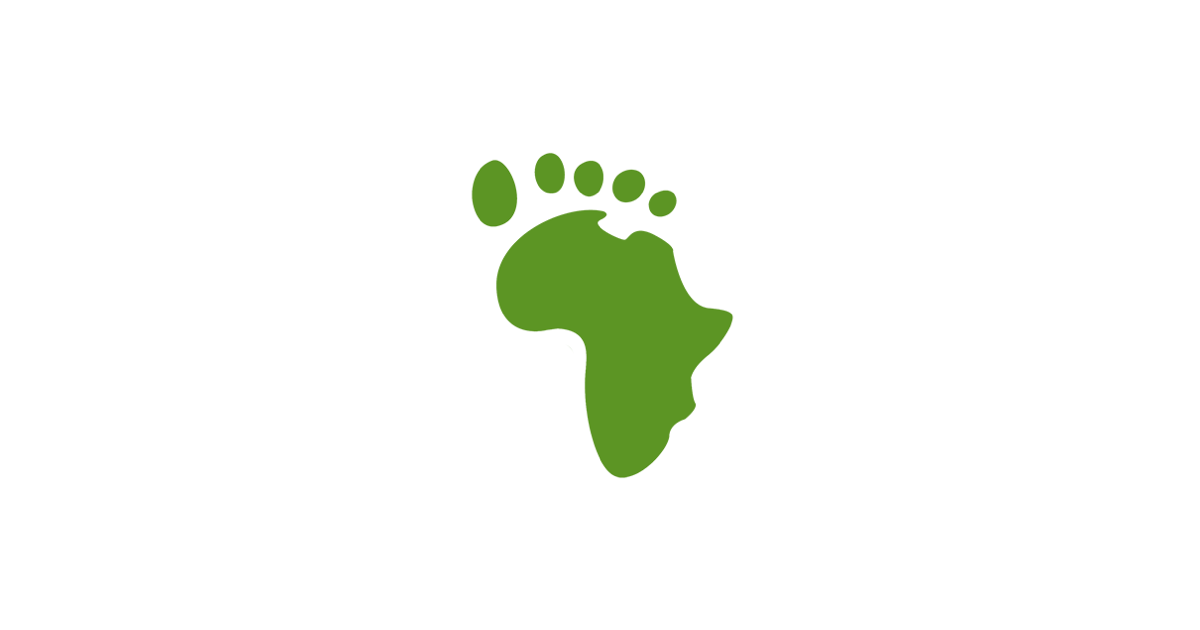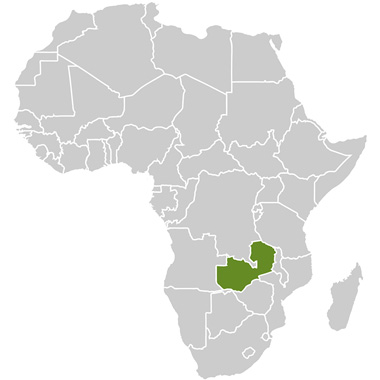The Untamed Kafue tourism route is situated in the Kafue National park which is the largest park in Zambia and one of the most important ecosystems in Africa. The park covers a total area of 22 400km² accounting for about 35% of Zambia’s total national park area. The park is a component of the Kavango–Zambezi Transfrontier Conservation Area (KAZA TFCA), the biggest Transfrontier Conservation Area in the world hosting the largest contiguous population of African elephant and some of the highest concentrations of wildlife on the African continent.
Kafue National Park is listed as an Important Bird Area and is designated a site of international importance for bird conservation. Birdlife is superb with 491 species recorded in the park, 390 of these are seen in the northern sector. Along the Kafue River and its tributaries, African Finfoot, Pel’s fishing owl, Bohms bee-eater and Half Collared Kingfisher can be seen. In the miombo, Black Backed Barbet, Spotted Creeper and Lady Ross Touraco occur, to name but a few. If you are keen on birding, you won’t be disappointed.
The park’s wildlife includes, buffalo, lion, cheetah, leopard, hyena, hippopotamus, crocodile and zebra. Elephant are seen throughout the park, with big herds in and around the Ngoma Forest in the south. There is a wide range of antelope, including Defessa Waterbuck, Puku, Lechwe, Sable, Oribi, Kudu, Roan, Eland, Blue Wildebeest, Impala, Bushbuck and Yellow-backed duiker, although you may have to travel through the entire park to see them all.
The northern section of the park can be accessed through the Lusaka-Mongu road via Mumbwa and Nalusanga gate. The Lusaka-Mumbwa road has been resurfaced and is easy driving. Mumbwa is 145km from Lusaka and a very important fuel stop for extended visits to the park. The fuel supply may be erratic and it’s advisable to phone in advance. The town has mobile phone reception. When in the park, a 4×4 vehicle is best to negotiate most of the roads. The southern park is accessible via the Mumbwa – Itezhi Tezhi road and from Livingstone via Kalomo on the Livingstone-Lusaka road to Ndudumwenzi gate, the Park’s southern gate. Another access to the northern section of the park is from Copperbelt, via Solwezi.
The park is fed by the Lufupa, Lunga and Kafue rivers. The Kafue River is the major drainage system and forms a major feature of the park. It has been dammed just outside the park to form Itezhi-tezhi dam built between 1974 and 1977. It was constructed in a range of hills through which the river eroded a narrow valley, leading the wetlands known as the Kafue Flats. In summer, the Lufupa River is in flood, which creates a large floodplain delta system attracting a great amount of water birds. The Lunga and Kafue rivers are wide and slow-flowing, lined by riverine forest.
Untamed Kafue Route as a destination is characterized by remoteness, exclusiveness, and peacefulness. Despite being the oldest park in Zambia, the park remains relatively underdeveloped. Perhaps, the mere size of the park has been a hindrance in itself. However, this is rapidly changing. There are a variety of safari lodges and camps in the park which range from budget to luxury accommodation. They are located both inside and outside the park.
Flagship species:
The route participants identified the cheetah as the flagship species of their route. A flagship species is a charismatic species of (sometimes global) conservation significance that has a high profile and attracts people to become involved in its conservation. A spin-off of this process is that habitats and other components of the environment as a whole also benefit from this increase in conservation awareness and actions. On each route local communities, wildlife scouts and safari guides together with tourist will monitor the population of the flagship species. In time this will provide a dataset that can indicate whether the wildlife conservation is benefiting from the efforts on developing tourism.
Note that a flagship species is not necessarily a keystone species – the latter being an important component of the ecology of many other species within a system e.g., a camelthorn or milkwood tree.
The cheetah (Acinonyx jubatus) is an atypical member of the cat family (Felidae) that is unique in its speed, while lacking climbing abilities. The species is the only living member of the genus Acinonyx. It is the fastest land animal, reaching speeds between 112 and 120km/h (70 and 75mph).
The cheetah is a carnivore, eating mostly mammals under 40 kg (88lb), including the Thomson’s Gazelle, the Grant’s gazelle, the springbok and the impala. The young of larger mammals such as wildebeests and zebras are taken at times, and adults too, when the cats hunt in groups. Guinea-fowl and hares are also prey. While the other big cats mainly hunt by night, the cheetah is a diurnal hunter. It hunts usually either early in the morning or later in the evening when it is not so hot, but there is still enough light.
The cheetah hunts by vision rather than by scent. Prey is stalked to within 10–30m (33–98 feet), and then chased. This is usually over in less than a minute, and if the cheetah fails to make a catch quickly, it will give up. The cheetah has an average hunting success rate of around 50% – half of its chases result in failure.
Running at speeds up to 112km/h (70mph) puts a great deal of strain on the cheetah’s body. When sprinting, the cheetah’s body temperature becomes so high that it would be deadly to continue; this is why the cheetah is often seen resting after it has caught its prey. If it is a hard chase, it sometimes needs to rest for half an hour or more. The cheetah kills its prey by tripping it during the chase, and then biting it on the underside of the throat to suffocate it, for the cheetah is not strong enough to break the necks of the four-legged prey it mainly hunts. The bite may also puncture a vital artery in the neck. Then the cheetah proceeds to devour its catch as quickly as possible before the kill is taken by stronger predators.
Cheetah cubs have a high mortality rate due to genetic factors and predation by carnivores in competition with the cheetah, such as lion and hyena. Recent inbreeding causes cheetahs to share very similar genetic profiles. This has led to poor sperm, birth defects, cramped teeth, curled tails, and bent limbs. Some biologists now believe that they are too inbred to flourish as a species.
Cheetahs are included on the International Union for Conservation of Nature (IUCN) list of vulnerable species (African subspecies threatened, Asiatic subspecies in critical situation). Approximately 12,400 cheetahs remain in the wild in twenty-five African countries.
When deciding on a safari on this route, it is important to get familiarized with park regulations and get more information from the local tour operators so that your visit becomes a real life experience and memorable.
Travel tips:
It takes over three hours on average to drive from one lodge in the Kafue National Park to another with interesting stops for game-viewing. Arrange for a trip to Kafue National Park in the dry season as driving is much easier. Lodges are closed in the park during the rain season and roads are impassible due to floods and mud.
Malaria:
Kafue National National Park is a malaria risk area. Consult your personal doctor for appropriate medication and prophylaxis. Malaria is transmitted by the nocturnal Anopheles mosquito. Always use mosquito repellent at night and sleep under a treated mosquito net.
Sunburn:
Use lots of sun block and a hat – particularly if you are on foot, in a boat or in an open vehicle. That tan may look good for a few days after you get back from safari, but skin cancer is a high risk for everybody – especially fair-skinned people.
Tsetse flies:
These flies only live in Africa and are a notorious companion to a visitor of Kafue National Park. They breed along rivers and streams. They are active during the day and feed exclusively on blood. Unlike most biting flies, where only the female feeds on blood, both male and female tsetse flies are blood suckers. Tsetse flies are common in heavily wooded areas in the park, so to avoid a quite painful sting, keep vehicle windows closed when going through the woodlands. A tin of insect repellent and fly swatter will come in handy. Some lodges in the park will give a sign for you to stop a good 100m or so before your camp site and make sure you have killed all the flies. Local initiatives to control Tsetse flies include burning elephant dung in a tin at the back of open safari vehicles, but it’s not as easy with a closed vehicle. A 30% Dettol, 70% water mix in an atomizer also seems to help. It’s essential to wear khaki – no dark clothes, not even socks. Periprel can also help. Once you’ve been bitten a couple of times, you realize they’re not that bad – keep a suction pump and some Stingose handy.
The best time to view game:
Dry season is best for game viewing due to less vegetation to hinder your view. When it is dry there is less standing water and food, which mean animals congregate to drink, making them easier to find and see. On the other hand, most animals have their young during the wet season, when there is more to eat and drink. Young are cute and great to watch and predators hunt very successfully at this time because the young animals are easy to catch. Bird-watching is better during the wet summer months, when the migratory birds are present. Certain wildlife areas are very seasonal – in other words certain animals move in and out depending on the availability of water and food – while others have more sedentary animal populations.
Photographic safaris are more popular during the wet months because the air is clear (no dust) and the colours more vibrant.
Weather:
When visiting Kafue National Park expect hot and wet summers (November-March) and cool and dry winters (April-October). Rainfall tends to be short thunder storms and temperatures vary between 20-35ºC in summer and 10-25ºC in winter. October and November can be especially hot and humid, with relief coming when the rains arrive.
National Park regulations in Zambia:
Entry into a national park is at your own risk. However, here are the safety tips and park regulations to follow to ensure you enjoy your visit:
- Any person entering a national park should have a valid entry permit issued at the point of entry or at the Zambia Wildlife Authority (ZAWA) Head Office or Park Headquarters;
- Entry and exit from the national park is only permitted at designated entry/exit points;
- When passing through a national park on a public road, declare at the point of entry and point of exit any firearm, ammunition or explosive in your possession;
- Entry into or exit from a national park or leaving a defined area around a lodge or camp within a national park during dark hours is prohibited; and
- Do not alight from a motor vehicle or boat except at a lodge or designated picnic site or bird hide, except on organized walking safaris.
Human Settlements and Game Management Areas:
To ensure that communities benefit from the management of park resources the Government established Game Management Areas (GMA’s). GMAs were established with the view to co-manage wildlife resources in designated areas. Therefore, GMA’s are not only important areas for wildlife resources but they are also cornerstones in the implementation of various wildlife management strategies. Partnerships become very crucial in this case.
Kafue National Park is surrounded by eight game management areas; Mulobezi, Sichifulo, Mumbwa, Kasonso-Busanga, Lunga-Luswishi, Namwala, Bilili Springs, Nkala and two proposed GMA’s (Mafunta and Kaindu). The total area of these GMA’s is 38,384 km². The GMAs were principally set aside to serve as buffer zones around the National Parks.
Community Based Natural Resource Management (CBNRM) in Zambia:
There is growing recognition in Zambia for the need to transfer power and decision-making processes into local communities and establish principles of local ownership of natural resources. Government documents such as the National Conservation Strategy of 1985, the National Environmental Action Plan of 1994 and the National Parks and Wildlife Policy of 1998 have highlighted the need for the involvement of local communities in the management of natural resources. The Zambian Government has prepared, and is in the process of implementing, the decentralisation policy. The CBNRM strategies were formulated and implemented in 1988 under the Administrative Management Design (ADMADE) for Game Management Areas (GMAs). This followed successful results from the pilot project implemented from 1985 to 1987 in the Lupande GMA in Eastern Zambia. The ADMADE programme later spread to many GMA’s across the country. The programme allowed for co-management of wildlife with the local communities in the GMA’s and sharing of the benefits of conservation that included financial resources. Finances that were due to local communities as a result of these programmes were later used on local community projects. The Wildlife Conservation Revolving Fund (WCRF) was created by the Zambian Government to provide a mechanism for ploughing back some of the revenues earned from wildlife utilisation by the Zambian Wildlife Authority (ZAWA).
*To read more on CBNRM in Zambia visit http://www.zawa.org.zm/cbnrm.htm
Areas surrounding Kafue National Park:
Southern Kafue National Park is approximately a 250km drive from the town of Livingstone, which is the gateway to the southern parts of Zambia. Itezhi-Tezhi is the nearest town to the park and is situated west of Namwala town. The town owes its existence to the construction of Itezhi-Tezhi Dam on the Kafue River in the early 1970’s. The dam was created to hold and regulate the water flow in the river for the Kafue Gorge Power Station lower downstream. Its population is estimated at 4 000 people and the main employer in the town is the electricity company ZESCO. The town has a district hospital, a few shops which sell basic supplies, a bakery and two vegetable markets. There is one fuel station. To buy fuel you have to pay first at their office at the top of the hill before filling up at the fuel station at the bottom of the hill. Make sure to check if they have electricity or supplies before you pay. There is one bank which is well signposted but it does not have an ATM. As all fuel, food and other supplies are brought down from Lusaka, prices are high and they often run out of basic goods. There is good cell phone reception in the town.
Northern Kafue has three useful access towns around it which include Kasempa in the north, Mumbwa to the east and Kaoma in the west. In Kasempa you find a hospital (Mukinge) and the town has cell phone reception. There are a few shops in Kasempa where you can get basic supplies. In Mumbwa there is a fuel station.and cell phone reception is good. The National Savings Credit Bank NATSAVE has a branch in Mumbwa but they do not have an ATM.
Ethnicity:
The major ethnic groups in this region are the Luvale of North Western province and the Tonga speaking people comprising the Lenje of central Zambia and the Ila people of Namwala. Lenje, also known as chilenje, is spoken in the Mumbwa and Lukanga Swamps in Central Province. Their paramount chief is Chief Mukuni of Livingstone. The Ila people are the traditional inhabitants of Namwala District and engage mostly in cattle herding, fishing, hunting and subsistence farming. The other ethnic group is the Nkoya people of Kaoma district.
Traditionally the Ila people do not eat their cattle, as they are a symbol of prestige and used as a major source of draught power. However, drought and disease have taken their toll on the cattle population. The Ila speaking people of Zambia reside mainly in the administrative districts of Namwala, Itezhi-Tezhi and Mumbwa.
Cultural Ceremonies of tribes around Kafue National Park:
Shimunenga Ceremony:
The Shimunenga Ceremony of the Ba-Ila people is celebrated on the weekend of the full moon in September or October at Maala, on the Kafue flats. Early in the morning, on the first day, people gather at the shrine of Shimunenga, where traditional songs are chanted. There is also a cultural march of women and girls in traditional dress, after which people are treated to performances by traditional dancers. On the following morning, the drum is sounded and animals are taken to the river, where cattle are displayed. The first cattle to cross the river will be those of the custodian of the shrine. This is followed by a demonstration of a mock lion hunt and pelican fishing. The occasion is marked with traditional songs in honour and praise of the Shimunenga ancestral spirits. Celebrations continue in the village with pit-stops for traditional beer at different places. Visitors to Southern Kafue National Park who are interested in cultural safaris can visit Maala to view this unique ceremony.
Kazanga Traditional Ceremony of the Nkoya People:
Kazanga is a ritual ceremony performed at Mangongi, in the Shilombo area. Visitors to North Kafue National Park who are interested in a cultural excursion can visit Mangongi in Kaoma district to view this unique Kazanga ceremony. Kaoma is about 470km from the Kafue National Park road bridge. The festival is a thanksgiving to God for a good harvest. The ceremony is performed by the subjects of Chiefs Mwene Mutondo and Kahare of the Nkoya people of Kaoma in Western province. The Kazanga ceremony is also a gathering at which the Nkoya chiefs meet their subjects to discuss various issues related to their way of life, honouring gallant fighters who fought in wars and brave hunters who killed marauding animals such as elephant and lion. The actual ceremony involves continuous beating of the royal ‘Minkupele’ and ‘Shilimba’ drums accompanied with drinking of sweet beer made from fresh sorghum which is then poured into a small hole dug in the ground.
* More information on the dates of the ceremony can be obtained from http://www.visitzambia.co.zm
Geology:
Most of Kafue National Park lies in the Central Zambezian Miombo Woodlands Eco-region characterized by savanna grasslands with miombo woodland areas. Much of this region consists of flat plains or rolling hills covered by extensive woodland, although rocky outcrops and inselbergs are fairly common. The gentle warping of the plateau surface has caused ponding (seasonal flooding) in many places, giving rise to a large number of lakes and wetland areas, such as the Upper Kafue Basins. Many smaller wetlands or ‘dambos’ are scattered throughout the region and can cover up to thirty percent of the landscape. Precambrian volcanic, granitic, serpentine, and sandstone rocks form the underlying geology. The combination of these crystalline rocks, low relief, moist climate and warm temperatures has produced highly weathered soils that are commonly more than three meters deep. The soils are typically well-drained, highly leached, nutrient-poor and tend to be acidic with a low proportion of organic matter. Locally, patches of altisols are also found, particularly associated with wetland areas.
Climate:
There are two distinct seasons that characterise the climate of the Kafue National Park; The wet season extending from October to April, and the dry season from April to September. July is usually the coldest month and October the hottest month. Temperatures in July range from a minimum of 5-7ºC to a maximum of 22-28ºC. In October the maximum ranges between 31 and 35 degrees Celsius and the minimum between 15 and 18ºC.
The mean annual rainfall ranges from 600mm in the south to 1200mm in the north. During the wet season, many of the roads in the Kafue National Park are inaccessible, and many lodges are closed during this time. The best time to visit the Park is from April to October during the dry season. After the rains have subsided, the park is green and lush making it ideal for bird watching. Please check with the relevant tourism operators to ensure that they are open before departing.
Rivers:
Kafue National Park is fed by three major rivers: the Lufupa in the north-west and the Lunga and Kafue (from which the park derives its name) in the north-east. The Kafue River is the major drainage system and forms one of the major features of the park. It has been dammed just outside the park to form Itezhi-Tezhi Dam. The dam was built between 1974 and 1977 at the Itezhi-Tezhi Gap, in a range of hills through which the river had eroded a narrow valley, leading to the broad expanse of the wetlands known as the Kafue Flats. In summer, the Lufupa River is in flood, which creates a large floodplain delta system attracting a great amount of water birds. The Lunga and Kafue rivers are wide and slow-flowing, lined by riverine forest. Other rivers, such as the Mushingashi, Shishamba, Musa, Nkala, Nanzhila and other tributaries flow through the park and into the Kafue River.
Infrastructure:
Despite being the oldest park in Zambia, Kafue National Park remains underdeveloped compared to other parks. Perhaps, the mere size of the park has been a hindrance in itself. However, this is rapidly changing. There are a variety of safari lodges and camps in the park which range from budget to luxury accommodation. They are located both inside and outside the park.
Accessibility:
Road access in the KNP, from the east and west, is by the tarred Lusaka – Mongu public road which passes through the park. This road links the park with Mumbwa and Lusaka in the east and Kaoma and Mongu in the west. In the north, the park is accessed by a gravel road from Kasempa to the Kabanga gate. The Kasempa – Mumbwa public gravel road passes through the park in the north-eastern part. Both the Kasempa – Mumbwa and Kasempa – Kabanga roads link with the town of Solwezi and the Copperbelt. In the south, the park is accessed by a road from a junction with the Lusaka – Mongu public road – and then by a gravel road, through to Itezhi-Ttezhi town and then to the Musa Park gate. Visitors from Livingstone can access the park from the south by a gravel road from Kalomo and enter at the Dundumweze gate.
There are four airstrips within the park and three airstrips located on the periphery of the park. There is a network of gravel roads within the park which are used for management and game viewing purposes. Accessibility within the park is hampered in wet season when many roads become impassable.
Getting to Kafue National Park:
Driving to Kafue National Park is an adventure. You need a reliable 4×4 vehicle with supplies and camping equipment. If you are well equipped, the park is a wonderful place and the camps in the park can help you with the geography of the area. It is important to have a map of the area and your own GPS unit. There are few vehicles in this wilderness area.
The Lusaka-Mumbwa road has been resurfaced and is good in normal driving conditions. Mumbwa is about 145km from Lusaka. Mumbwa has a fuel station, so you can refuel your tank, fuel cans and you can also make phone calls. The Lusaka – Mumbwa road provides ideal access to the northern and southern sections of the park. When in the park, a 4×4 vehicle is best to negotiate most of the roads. Most of the lodges in Kafue National Park are in the northern section of the Park and can be reached from Lusaka via Mumbwa. To access the northern Kafue camps you will need a 4×4 vehicle. Access to the northern section is from the road leading north out of Mumbwa. The southern park is accessible via the Mumbwa – Itezhi Tezhi road. The junction is 66km from Mumbwa, and there is a sign pointing to Itezhi-Tezhi on the left. This is a gravel road which needs a sturdy vehicle.
The road going through the park takes you to the Busanga plains and camps close by. Drive through to the Kafue River Bridge and after crossing you will see a gate on the northern side. Private camping is forbidden at Busanga as you can easily get lost. Local operators must accompany visitors. During the dry season it is possible to reach Busanga plains and Chunga without a 4×4, although accessing other areas to the west requires a 4×4 vehicle. If you are coming from the Copperbelt, drive to Solwezi and onward to Kasempa. From here, the 98km road takes you to Lunga Pontoon and is fairly well graded. A road on the left side, 16km before the Pontoon, takes you to Kafue’s northern gate.
Kafue National Park can also be accessed from Livingstone via Kalomo on the Livingstone-Lusaka road to Ndumdumwenzi gate, the Park’s southern entrance.
Due to floods, resulting from poor drained soils in plains and heavy rainfall, the road conditions in Kafue National Park can be extremely poor. They are maintained, but check road conditions before embarking on your adventure.
Telecommunications:
Telecommunication facilities are among the best in Sub-Saharan Africa. Zambia has a domestic high-capacity microwave radio relay that connects larger towns and cities. Cellular telephone service providers include MTN, Zain and Cell-Z. Internet service is becoming more widely available. The international country telephone code is +260. There is no cellphone reception in the park – communication is by satellite phone only.
Birding and wildlife:
Kafue National Park is listed as an Important Bird Area (IBA) and is a site of international importance for the conservation of birds. Birdlife is superb, with wattled crane and Fulleborn’s longclaw being some of the notable specials in addition to a whole host of other grassland and water birds. Of the 491 species that occur in the park, 390 of these are seen in the northern sector. Along the Kafue River and its tributaries, African finfoot, Pel’s fishing owl, Bohms bee-eater and half collared kingfisher can be seen. In the miombo, black backed barbet, spotted creeper and Lady Ross Turaco occur, to name but a few. If you are keen on birding, you won’t be disappointed.
The park’s wildlife includes, buffalo, lion, cheetah, leopard, hyena, hippopotamus, crocodile and zebra. Elephant are seen throughout the park, with huge herds in and around the Ngoma Forest in the south. There is a wide range of antelope, including Defussa waterbuck, puku, sitatunga, red lechwe, sable, oribi, kudu, roan, eland, blue wildebeest, impala, bushbuck and yellow-backed duiker, although you will have to travel through the entire of the park to see them all.
Busanga plains:
A dominant feature in northern Kafue National Park is the Busanga Plains fed by the Lufupa River system. The plains are a vast savannah of seasonally inundated grasslands dotted with tree islands and areas of broad-leafed woodland. The plains are a wildlife sanctuary hosting large mammal species such as elephant, zebra, hippo, lion, red lechwe, puku, sable, roan, bush duiker, warthog, buffalo, sitatunga and oribi. Wattled and crowned cranes also occur in the central and northern parts of the Busanga Plains and Ground Hornbills are well distributed, mostly in or close to the woodland areas.
Tourism in the Kavango-Zambezi (KAZA) Transfrontier Conservation Area:
Kafue National Park is the northern extreme of the KAZA TFCA which encompasses parts of the Okavango and Zambezi River basin regions of five countries – Namibia, Botswana, Zambia, Zimbabwe and Angola. Key transboundary organisations in the development of the KAZA TFCA include the Peace Parks Foundation and Conservation International. The aim of the KAZA TFCA is to promote the area as a major tourism destination based on a network of protected areas and wildlife populations. The KAZA TFCA is home to the largest concentration of elephants in Africa. Within the context of sustainable development, the KAZA TFCA encourages both private sector and community -based tourism.
Shopping:
When you have explored the spectacular natural wonders of Kafue National Park, it is time for retail therapy in the many curio markets of Zambia. Woodcarvings, masks, jewelery, hand-made souvenirs and furniture are easily found in the markets. Zambia is particularly renowned for copper bracelets and hand woven and dyed fabrics. Most visitors are sure to pick up a necklace or a staff of Nyaminyami the Zambezi river god.

